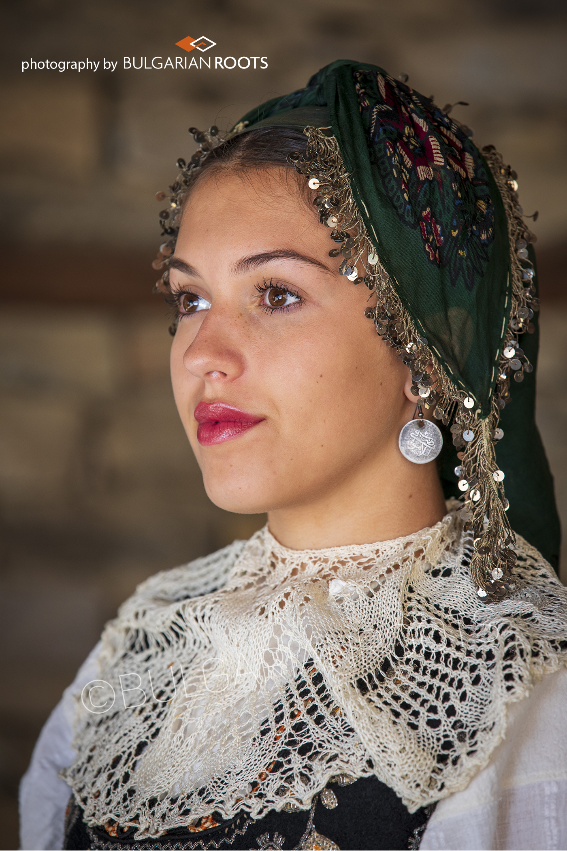The hair of the Bulgarian and their veil in the folk faith
- Anelia Krumova

- May 10, 2021
- 3 min read
Updated: Nov 11, 2021
Bibliography:
Ganeva, R., 2003. The signs of the Bulgarian traditional clothing. Sofia
Veleva, M., 1960. A Bulgarian headscarf. Ethnographic research, Sofia
Mihailova, G., 1999 Material and Spiritual Culture, Sofia

From an early age, girls were taught by their mothers and grandmothers to take special care of their hair. It started with the most important rule – “Do not cut the hair from below, it is from the person, from his soul and head." When the ends of the hair had to be recovered, they were carefully cut with a stone. And the hair that fell out during combing was carefully gathered and braids were spun from it with “hurka” or “darak”, which were additionally adjusted. The woman never parted with them, she was buried with them. In very rare cases, the hair was inhume under a rose, walled up in a hole in the wall or burned.
According to popular belief, "a woman's body and hair are watched" and women who had bush of hair were strong, hardworking and would give birth to many children. Therefore, when the boys chose their daughter-in-law, they looked at their hair. And the girls showed the density, volume and length of the hairstyle and the decorations to it to demonstrate sexual power.

The privilege of the girl to be with open hair to be looked around and the complete prohibition of this action for the married, was defined as a major feature of the marital status in the Bulgarian scientific literature - the headscarf showed that the bride was conquered. D. Marinov, for example, reveals the obligation of the married woman to hide her hair from the world and to reveal it only to her husband. The same statement is made by L. Miletic in his study of the population of Northeastern Bulgaria. He even clarified that removing the headscarf from a married woman and showing with open hair, according to customary law, is tantamount to dissolving the marriage. The bride's hair was concealed or trimmed, as above the forehead were formed “krakmi” and “tsalufi” so that the hair of a married woman could not be seen.

It is interesting, however, what made the society, which admired the hair so much, go to another strict extreme and force its concealment. The only explanation could be related to the fact that according to folk beliefs in the beginning people were all hairy, and when they began to be baptized, they were left with hair only on the head, armpits and abdomen. Thus, hair remains outside the bounds of the sacred sign, becomes a sin, along with sexual hair. The sexual power of the woman, expressed in the lush and voluminous hair, became the property and possession only of the husband. Even the hair that fell out during the wedding braid was sent to the girl's new home, with the trousseau, such as was wrapping around a dogwood stick with red woolen thread.

The most severe ban related to hair is connecting with untangling it in public, so the girls braided their hair all night. This was done to hide the untangled hair from others. It was believed that she belonged to another world - the night, death. In folklore, this was the essence of the fairies, the plagues and other beings from the afterlife. The demonic female beings were unraveled, belonging to the so-called "restless souls" left on the border between the two worlds. Uncombed, tousled hair, the people called plague. A woman can have her hair untangled only in certain ritual situations: at Lazarus, when she gave birth. The closest relative of the deceased could also be untangled - in most cases it is the daughter. Unbraided hair was taken as a sign of transition. Another ban was that a man was not allowed to see a woman while washing his hair.
Definitely is the entanglement that takes place at a funeral, when entering that world, asymmetrical to the earthly, social. Unlike the living woman, the dead woman intertwined backwards, upside down - from the inside out. The dragon's lover intertwined in the same way. In folk songs, this weave was known as dragon knitting.
Hair not only marked spaces - social, liminal, beyond, but in violation of the rules overturns them. Hence the belief in the strong magical vulnerability of hair. She gains resilience only through strict adherence to certain rules of hairstyle and veil.

"From big and beautiful hair, the most can be put under a spell ,people look at it, and from hair most catches. “








Comments